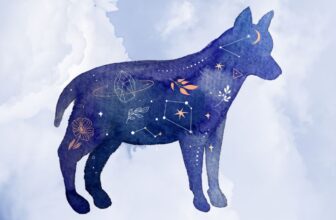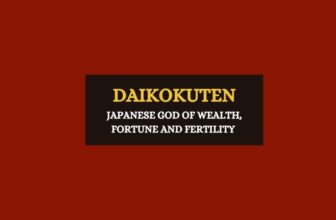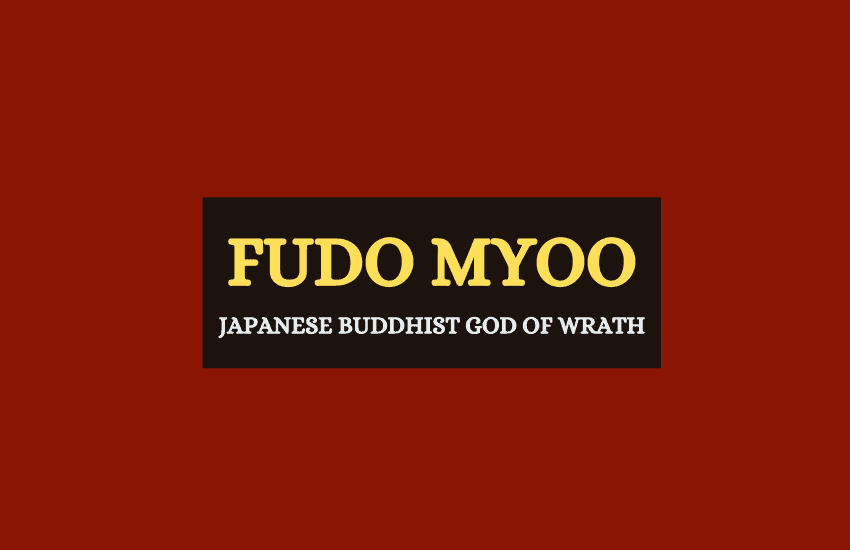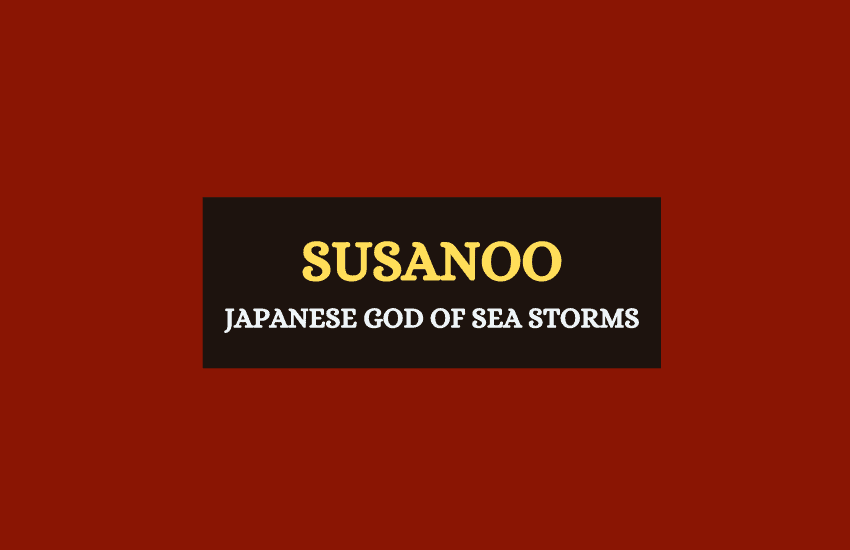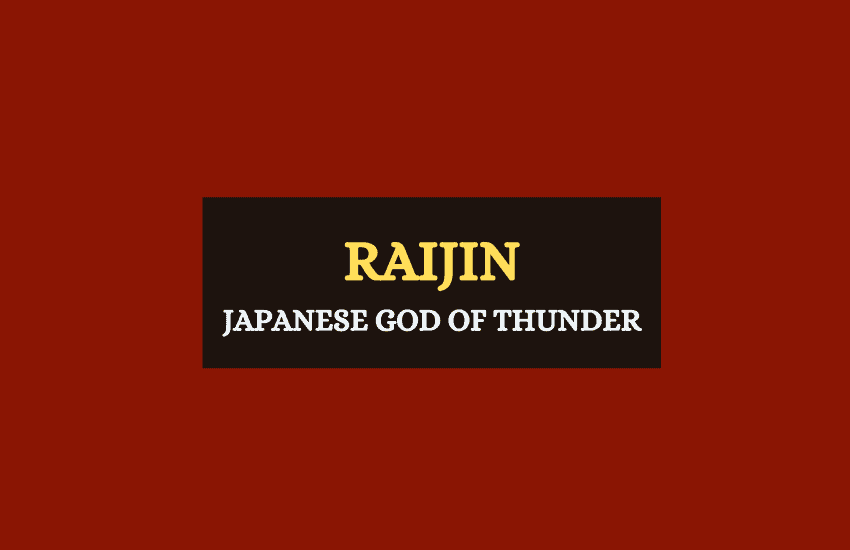
Table of Contents
In Japanese mythology, Raijin, the god of thunder, is unique in many ways. While most gods of thunder and storm in other religions and mythologies such as the Norse god Thor or the Hindu god Indra are heroic protagonists, Raijin is a much more ambiguous deity.
Arguably, Raijin represents the nature of thunderstorms in a better way than most other Thunder Gods – they bring both life and death, hope and despair, and so does Raijin.
Furthermore, Raijin is the thunder god of more than one religion – he’s worshipped not just in Shintoism but also in Japanese Buddhism and Daoism.
Who is Raijin?
Raijin is much more than just the Shinto kami (god) of thunder. He’s also a capricious deity who is often slacking, easy to anger, and is the resident trickster god of Shintoism. Raijin doesn’t hesitate to strike innocents with his thunder and lightning when he’s in the mood but he will also offer his help when asked nicely.
Raijin’s name literally translates from Kanji writing as Thunder God but he also has other names. These include:
- Kaminari or Kaminari-sama, meaning Lord of Thunder
- Raiden-sama or Lord of Thunder and Lightning
- Narukami or The Resounding God
- Yakusa no ikazuchi no kami or God of Storms and Disaster
Raijin is usually portrayed with a twisted and monstrous appearance, animal teeth, muscular body, and wily hair. He also often carries two big drums he beats to produce his signature thunder and lightning. He’s also often referred to as an oni – a Japanese demon rather than a god, due to both his mischievous nature and his rather disturbing birth which we’ll discuss below.
Despite his ambivalent character and propensity for unprovoked destruction, Raijin is still worshipped and prayed to. In fact, he’s usually depicted with a traditional Buddhist halo around his entire person. The halo is made out of various markings from the Buddhist, Shinto, and Daoist religious traditions alike.
A Bizarre Birth and a Disdain For Belly Buttons
Raijin is the son of the Mother and Father deities of Shintoism, the kami of Death and Creation – Izanagi and Izanami. He had a very extraordinary birth – both he and his brother Fujin were born from Izanagi’s rotting corpse after she died in the Shinto Underworld of Yomi.
This isn’t just a random detail – Raijin’s unnatural birth in Yomi explains his grotesque look – he’s a literal creation of the Underworld and has the monstrous appearance to prove it.
In a weird twist of the story, likely invented to scare children, Raijin also doesn’t have a belly button – none of the creatures born in Yomi do. This both signifies his unnatural birth and has led to the myth that children should cover their own belly buttons when there’s a thunderstorm. If not, Raijin will see them, get envious of their belly buttons, and he’ll kidnap and eat them – the kids that is, not just their belly buttons.
To Catch a Thunder God
Shinto kami gods are not as omnipotent and all-powerful as the gods in other religious – they are a fascinating cross between gods and spirits. And Raijin is no exception.
This leads to some curious “rules” within Japanese mythology. One such interesting rule is that both Raijin and other kami gods are answerable to certain mortal men. Namely, they have to obey the bodhisattva – Buddhist holy men who are on the path of Enlightenment and on the verge of becoming a Buddha.
- Raijin and Sugaru the God-Catcher
One famous story tells about the Japanese emperor growing angry with Raijin for all the destruction and calamity the Thunder God was causing. So, rather than praying to the kami, the emperor called a man named Sugaru and nick-named The God-Catcher.
The emperor ordered Sugaru to capture Raijin and the God-Catcher got down to business. First, he asked Raijin to come peacefully and submit to the emperor but Raijin answered by laughing at him. So, Sugaru’s next step was to invoke Kannon, the famous Buddha of Compassion who compelled Raijin to give himself up and submit to the emperor.
Unable to resist the word of the holy man, Raijin gave up and came before Japan’s ruler. The emperor didn’t punish the Thunder God but he ordered him to cease his aggression and Raijin obeyed.
Raijin and Fujin
As the son of the two main deities of Shintoism, Raijin has several notable siblings such as Amaterasu, the goddess of the sun, Susanoo, the chaotic god of sea storms, and Tsukuyomi, the god of the moon. Raijin is also the father of Raitaro, also a thunder god.
Raijin’s most frequent companion, however, is his brother Fujin – the god of the wind. While Raijin is often accompanied by his son Raitaro or by the thunder beast Raiju, Raijin and Fujin are a pair that’s rarely separated. The two share both a similar appearance and similarly uncontrollable characters.
Raijin and Fugin are capable of both incalculable destruction as well as enormous good. Not only is Raijin one of the favorite deities of farmers because of the rain he provides, but Raijin and Fujin together have performed some amazing feats together. The most famous example they are credited with is stopping the Mongol invasion of Japan in 1274 and 1281 by blowing away the Mongol ships with powerful typhoons.
Symbolism and Symbols of Raijin
Raijin doesn’t just bear the name “God of Thunder”, he symbolizes thunderstorms better than most other cultures’ thunder gods.
Raijin is near-impossible to control, very volatile and short-tempered, he’s arrogant, impulsive, and capable of amazing destruction at a whim. However, he’s not an “evil” god. He’s loved by farmers and other ordinary people for the rain he supplies.
Raijin’s most famous symbols are the drums that he beats. These drums feature the tomoe symbol on them. The tomoe, which means circular or turning, symbolizes the movement of the world, and is also connected to the yin yang symbol.
Importance of Raijin in Modern Culture
As one of the main kami deities in Shintoism and Buddhism, Raijin is widely revered. Countless statues and paintings of him and his brother Fujin exist to this day, the most famous and beloved of which is in the Buddhist temple Sanjusangen-do in Kyoto. There, both statues of both Raijin and Fujin guard the entrance of the temple and are seen by thousands of religious followers and tourists alike.
Raijin is also frequently mentioned in modern culture, especially in Japanese manga and anime. The most famous examples include the anime/manga series InuYasha, the Miyazaki movie Pom Poko, the famous anime/manga series Naruto, as well as popular video games such as Final Fantasy VIII and Mortal Kombat where the character Raiden is inspired by the god Raijin.
Facts About Raijin
Raijin is the Japanese god of thunder.
Raijin’s parents are the gods Izanami and Izanagi.
Raijin was born from the decayed corpse of his mother, linking him to the underworld.
Raijin is seen as an Oni but he’s also viewed as a positive force.
Fujin, god of wind, is Raijin’s brother with whom he spends most of his time.
Wrapping Up
Raijin remains one of the most important of the Japanese deities, and is popular in today’s pop culture. His power, strength and abilities as well as his ambiguity made him a god that was both feared yet revered.




